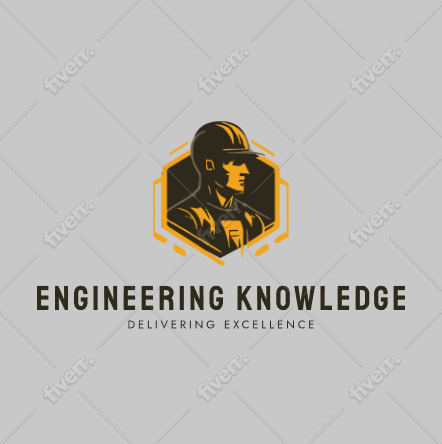Valuable information about centrifugal pumps
Key Takeaways:
- Centrifugal pumps are a reliable and efficient pump solution for industrial needs.
- They are capable of handling large volumes of fluids and are popular in chemical processing and water treatment.
- Efficient centrifugal pump solutions are tailored to meet specific needs.
- Understanding pump efficiency, maintenance, and troubleshooting is crucial for optimal performance.
- Selecting a reputable manufacturer is key for reliable and effective pump solutions.
1). Key Components of a Centrifugal Pump:
| Component | Description |
|---|---|
| Impeller | A rotating component that transfers mechanical energy to the fluid by accelerating it. |
| Diffuser | A stationary component that converts kinetic energy into pressure energy by gradually expanding the flow area. |
| Volute | A stationary component that converts kinetic energy into pressure energy by forcing the fluid to flow through a gradually expanding spiral passage. |
| Shaft | A rotating component that transfers torque from the motor to the impeller. |
| Bearing | A component that supports the weight of the shaft and ensures smooth rotation of the impeller. |
2). Centrifugal Pump Parts and Specifications:
| Component | Function |
|---|---|
| Impeller | Rotating component that provides kinetic energy to the fluid. |
| Casing | Stationary component that guides the fluid flow and minimizes turbulence. |
| Shaft | Connects the impeller to the motor and transmits torque and power. |
| Bearing | Supports the shaft and impeller and reduces friction and wear. |
| Seal | Prevents leakage between the pump and the surroundings. |
The following are the essential centrifugal pump specifications:
- Flow rate: The volume of fluid that the pump can discharge per unit time (gallons per minute or cubic meters per hour).
- Head: The pressure difference between the pump inlet and outlet (feet or meters).
- Power: The energy required to operate the pump (horsepower or kilowatts).
- Efficiency: The ratio of the pump output power to the input power, expressed as a percentage.
- NPSH: The net positive suction head required to avoid cavitation, expressed in feet or meters.
Understanding the Working Principle of Centrifugal Pumps:
- The basic idea behind a centrifugal pump is to convert mechanical energy into hydraulic energy by using centrifugal force. In essence, the pump works by accelerating the fluid inside the impeller, which is a rotating component of the pump that consists of curved blades. The fluid is forced toward the impeller's outer edges by the centrifugal force produced when the impeller spins. This results in a reduction in pressure at the center of the impeller, which causes more fluid to flow towards the impeller through the pump's inlet.
- At this point, it is worth noting that centrifugal pumps operate based on the principles of fluid dynamics. As the fluid moves through the impeller, it experiences both centrifugal and axial acceleration. The centrifugal force is caused by the curvature of the blades, while the axial acceleration is caused by the vanes of the impeller.
- Another key component of centrifugal pumps is hydraulic machinery. This refers to the mechanisms that are responsible for transforming the energy of the fluid into mechanical energy. Hydraulic machinery consists of multiple components, including the impeller, diffuser, and volute. The impeller accelerates the fluid, while the diffuser and volute convert the kinetic energy of the fluid into pressure energy.
Effective Maintenance and Troubleshooting of Centrifugal Pumps:
1). Maintenance Tasks:
Regular maintenance tasks are crucial in keeping centrifugal pumps functioning efficiently. Some essential tasks include:
- Checking and replacing the oil and other lubricants
- Cleaning or replacing the filters and strainers
- Tightening belts and bolts
- Inspecting and replacing worn or damaged seals and gaskets
- Verifying the alignment of the motor and pump shaft
2). Troubleshooting Techniques:
Troubleshooting techniques can help you identify and resolve these issues, such as:
- Checking for leaks or damage to the pump casing and impeller
- Verifying proper alignment of the pump and motor shaft
- Checking for clogs or obstructions in the suction line
- Inspecting the mechanical seal for damage or wear
- Checking the motor and electrical connections for potential issues
3). Mechanical Pump Problems:
Mechanical pump problems can cause significant damage to centrifugal pumps, affecting their overall performance and efficiency. Some common mechanical pump issues include:
| Problem | Possible Causes | Solutions |
|---|---|---|
| Excessive Vibration | Loose mounting bolts, misalignment, or imbalance | Tighten bolts, realign the pump and motor, or balance impeller |
| Overheating | Insufficient lubrication, clogs in the system, or high ambient temperatures | Check and refill lubricants, remove clogs, or lower ambient temperatures |
| Low Flow Rate | Clogs in the suction line or impeller, low liquid level, or worn impeller | Remove clogs, increase the liquid level, or replace the impeller |
When addressing mechanical pump problems, it is essential to identify the root cause of the issue and take prompt action to prevent further damage.
Maximizing Efficiency: Centrifugal Pump Performance and Selection:
Efficient pumping systems are essential for reducing operating costs and extending the life of your equipment. Here are the pump performance, selection, operation, and troubleshooting to help you achieve optimal results.
1). Pump Performance:
- The performance of a centrifugal pump is determined by its efficiency, which is the ratio of the energy output of the pump to the energy input. An efficient pump will have a high flow rate and a low power requirement, resulting in lower operating costs and reduced energy consumption.
- The performance of a centrifugal pump can be graphically represented by its performance curve, which shows the relationship between flow rate, head, and power consumption. By analyzing this curve, you can determine the most efficient operating point for your pump which will maximize its performance.
| Flow Rate | Head | Power |
|---|---|---|
| Low | High | Low |
| Medium | Medium | Medium |
| High | Low | High |
2). Pump Selection:
- Choosing the right pump for your application is crucial for efficiency and performance. Factors such as flow rate, pressure, viscosity, and temperature must be considered when selecting a pump. It is also important to choose a reputable pump manufacturer that offers quality products and reliable support.
- A centrifugal pump can be selected based on its performance curve and the system curve, which represents the pressure and flow characteristics of the system. By matching these curves, you can select a pump that will operate at its most efficient point and provide reliable performance.
3). Pump Operation:
- Efficient pump operation requires proper installation, maintenance, and monitoring. Inlet and outlet piping must be correctly sized and free of obstructions to ensure smooth flow. Regular maintenance tasks such as cleaning, lubrication, and replacement of worn parts will help to prevent issues and prolong the life of the pump.
- Monitoring the performance of the pump through measurements of flow rate, pressure, and power consumption will help to identify any issues before they become major problems. It is also important to address any changes in the system, such as changes in fluid properties or system pressure, which can affect the pump's performance.
4). Troubleshooting:
- If an issue with the pump arises, it is important to quickly identify and address the problem to prevent further damage. Common issues with centrifugal pumps include cavitation, low flow, and low pressure.
- Cavitation occurs when the pressure in the system drops below the vapor pressure of the fluid, causing bubbles to form in the impeller, which can lead to damage and reduced performance. Low flow and low pressure can be caused by a variety of issues, such as impeller damage, blockages, or incorrect installation.
- By identifying and addressing these issues, you can maintain pump efficiency and prolong the life of your equipment.
Applications of Centrifugal Pumps:
1). Industrial Pumps:
- One of the main applications for centrifugal pumps is in industrial settings. These pumps are used for a variety of tasks, including moving water, chemicals, and other fluids through systems. The ability to handle a wide range of fluids and substances makes centrifugal pumps invaluable in industrial applications.
2). Water Pumping:
- Centrifugal pumps are also commonly used in water pumping applications. Whether it’s for agricultural irrigation, municipal water systems, or dewatering construction sites, these pumps can handle a variety of water types and volumes.
3). Fluid Transfer:
- Centrifugal pumps are also utilized for fluid transfer applications, such as oil and gas production, chemical processing, and pharmaceutical manufacturing. These pumps can move fluids quickly and efficiently, making them a critical part of many fluid transfer systems.
| Application | Industry |
|---|---|
| Industrial wastewater treatment | Municipal water treatment |
| Cooling tower circulation | HVAC |
| Boiler feed | Power generation |
| Chemical processing | Manufacturing |


.png)


.jpg)





.jpg)



0 Comments